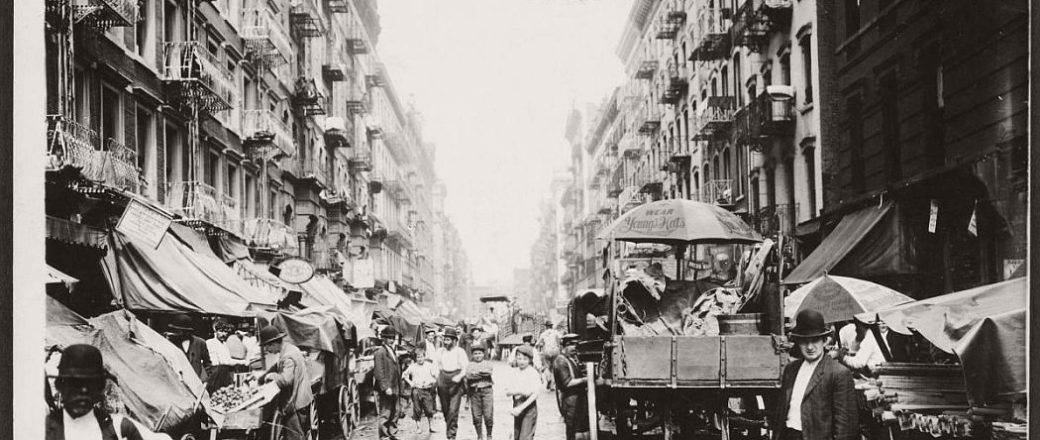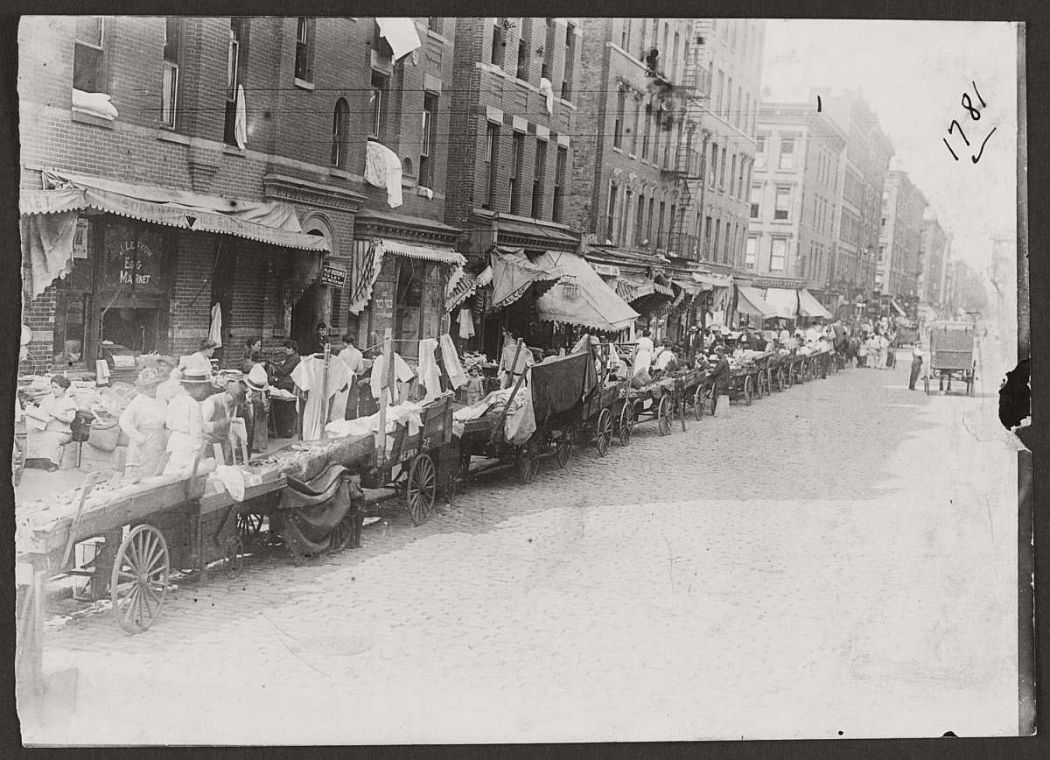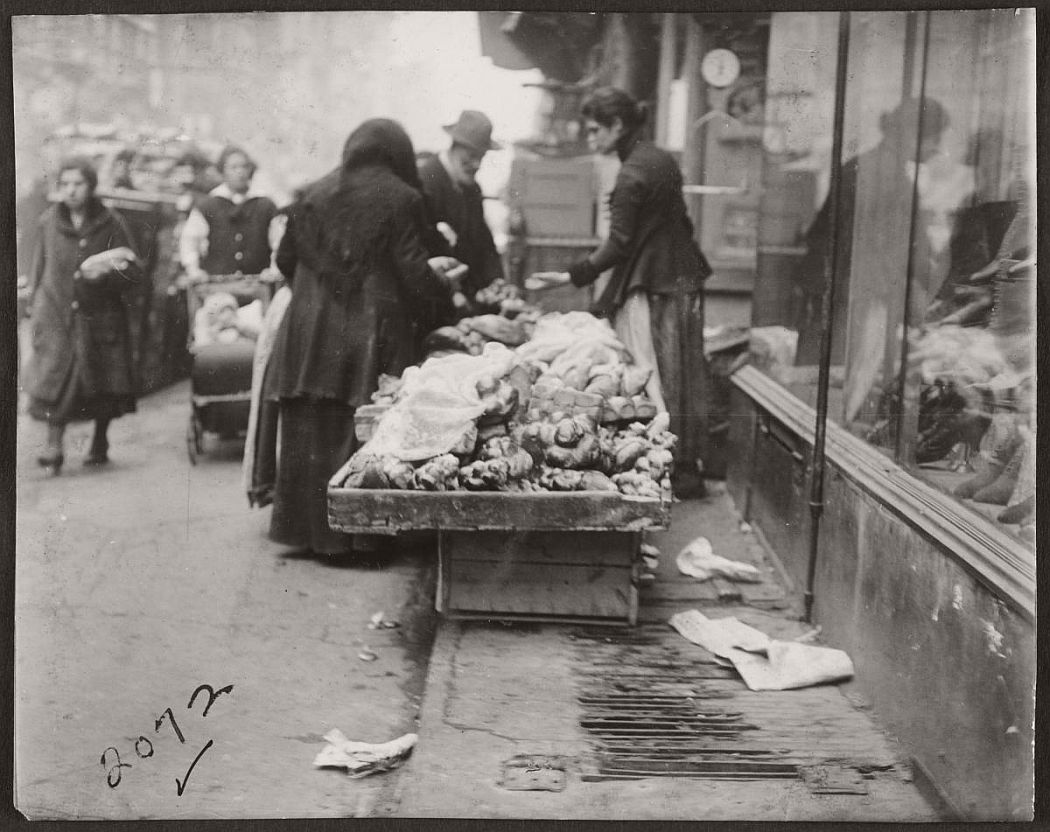Pushcart vendors were initially not required to have a license to peddle their wares (“Pushcarts”). This quickly changed, however, and they were required to pay a small fee to ply their trade. The fee would change over the years, but one thing was certain, the license was never strictly enforced. Many pushcart vendors bribed the local police in order to ensure a good location on the block (for a time there was a rule that they had to move every thirty minutes). The 1906 Veiller Commission (titled Report of the Mayor’s Push-Cart Commission) found that the Italians had set up a padrone, or “boss,” system so that poorer, new immigrants could circumnavigate the license fee.
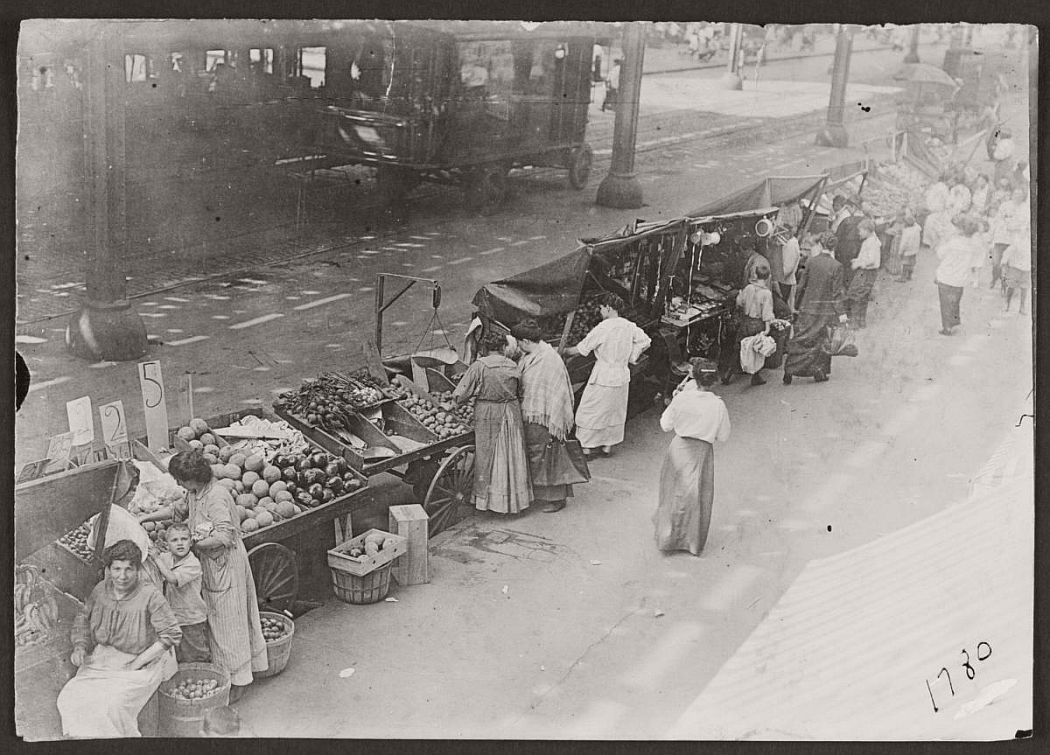
Note the rubber tires on the trolley. It looks as if two trolleys are passing each other. This was taken in the Italian neighborhood. This area is now covered by Housing Projects.
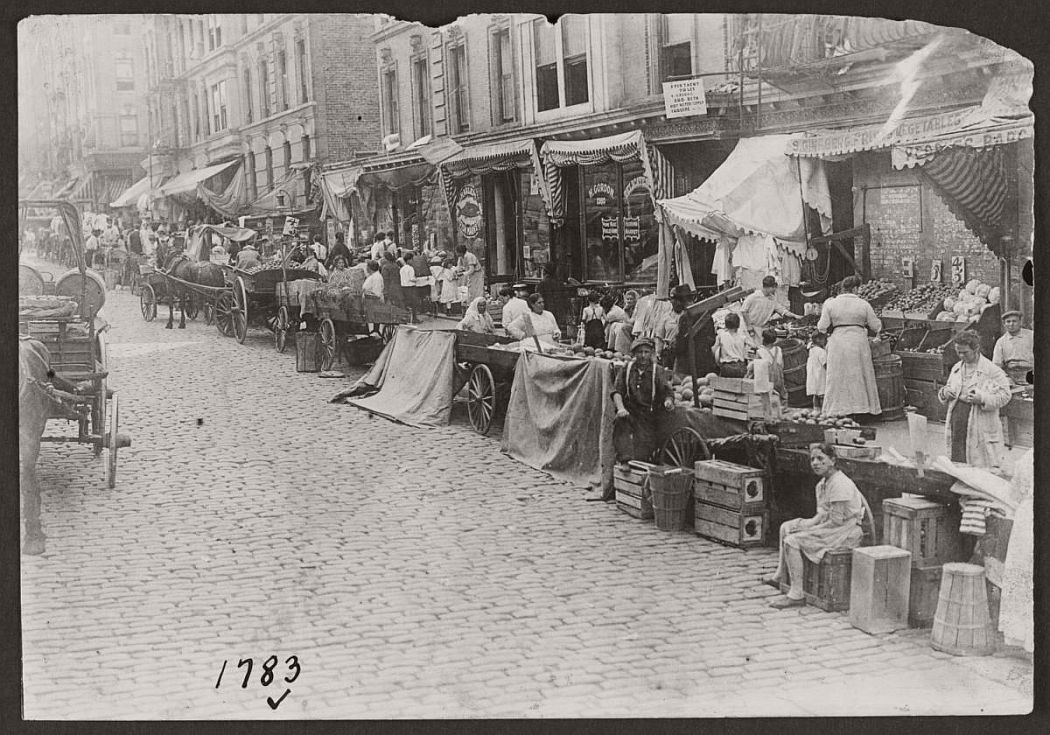
This was taken in the Jewish neighborhood of the pushcart market between 102 and 110 streets. The number on the window of the H. Gordon store at the right is 1380, which would be between 103 and 104 streets on Park Avenue.
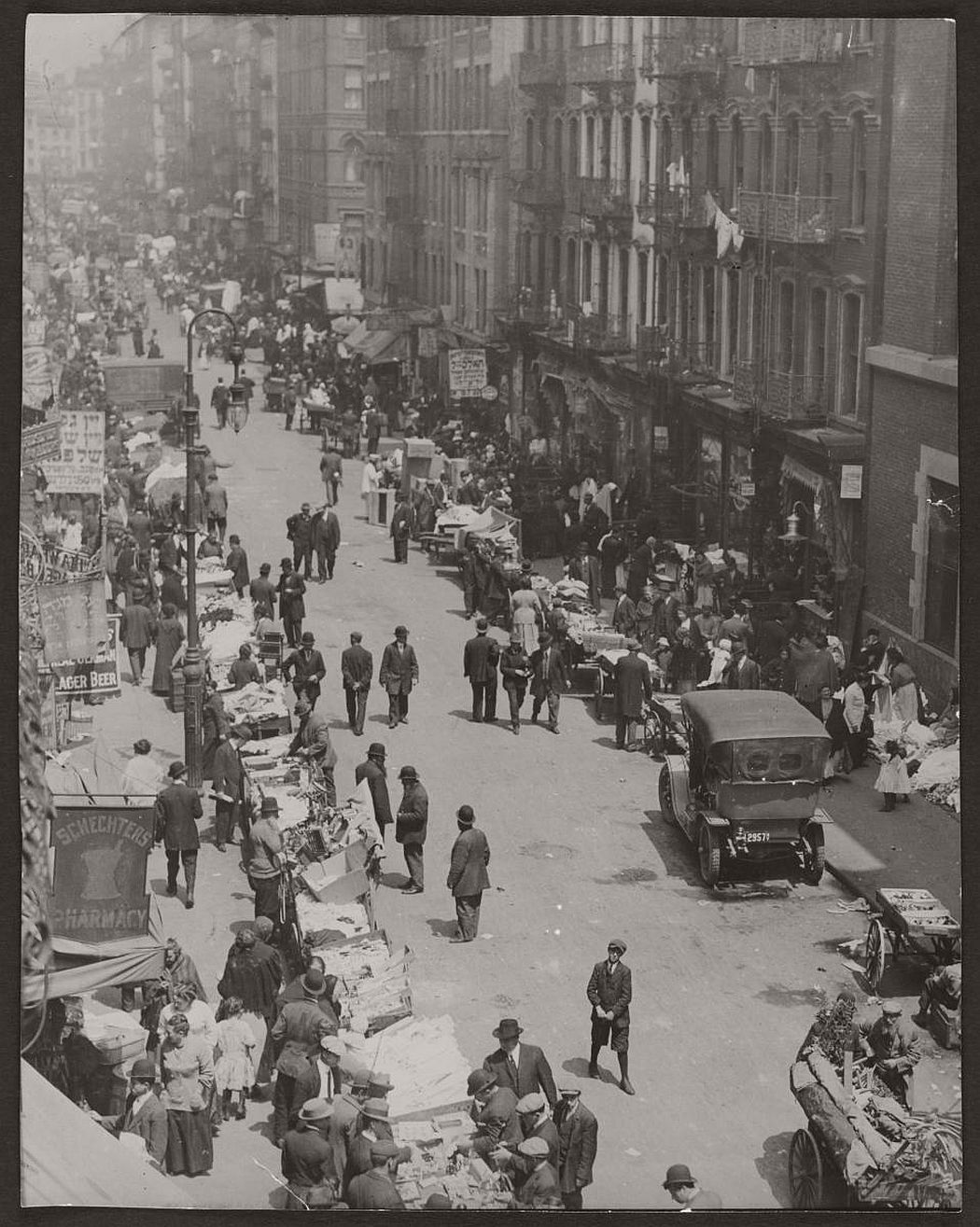
Looking North on Orchard Street. Note the car at the right is a Model T Ford, which first came on the market in 1909.
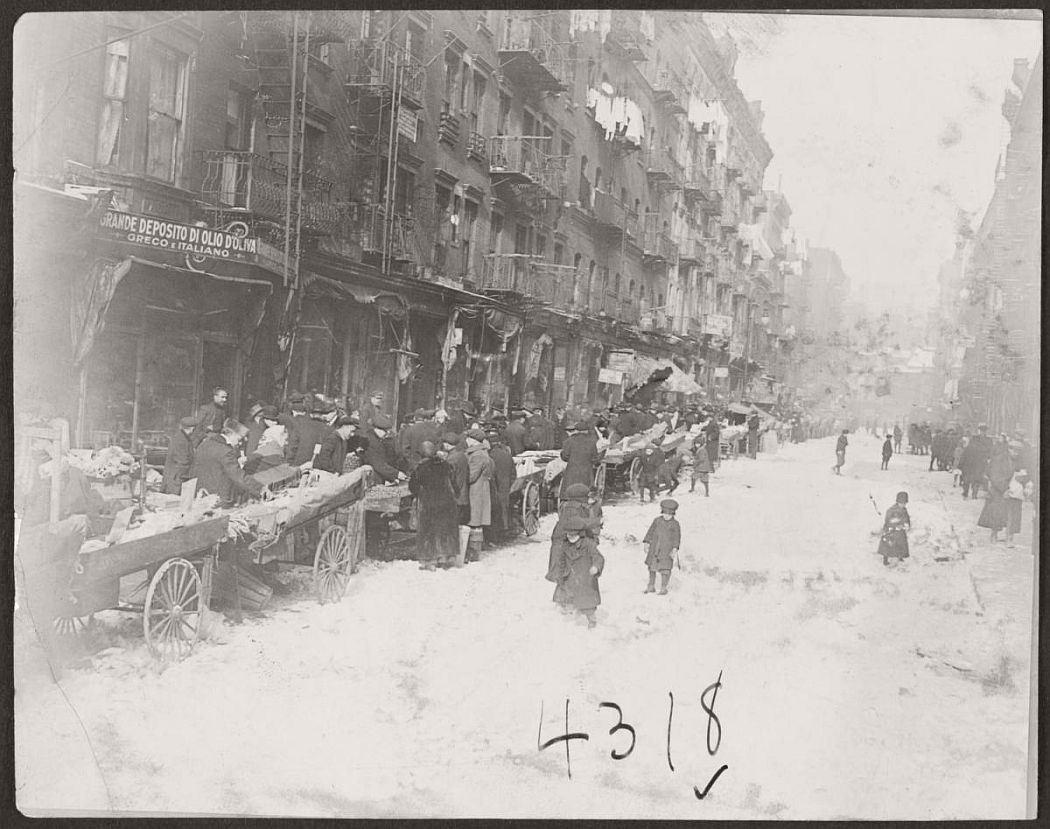
Looking north on Elizabeth Street from Prince Street. Low, snow topped buildings in background are on Bleecker Street.

